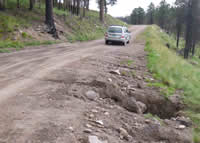Natural Restoration Structures are Unique
Many of our techniques were invented in-house (contour ponds, wetland sod techniques) and can be best implemented by those who invented them. Our rock structures involve dry-laid stone techniques unique to stream restoration. Each rock is placed so that the overall structure is strengthened; together, the structure has flexibility and give, but acts as one piece of mass in its resistance to erosion. Unlike concrete and gabions, dry-laid stone structures integrated with wetland vegetation only get stronger over time due to the strength of plant roots. A successful structure may be invisible in a few years as it becomes incorporated into the landscape.
- Details
- Category: Design/Build
Keystone Restoration Ecology is a design/build firm offering an array of Ecological Restoration services. Our design process ensures a high quality, innovative solution and one that will be financially feasible.
Design Process
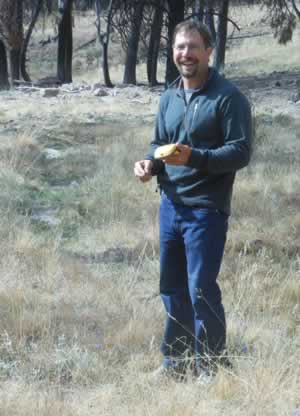
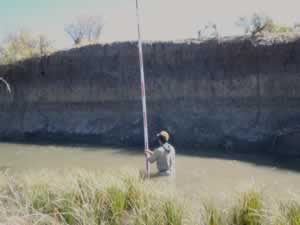 Site Visit - We begin with a site visit and discussion of the issues or challenges on-site. Following the visit it is imperative to collect data to decide on the appropriate design solution.
Site Visit - We begin with a site visit and discussion of the issues or challenges on-site. Following the visit it is imperative to collect data to decide on the appropriate design solution.- GPS Mapping - Next we use a GPS to create a map of the landscape identifying plant communities, resource threats, and human impacts. This “Reading the Landscape” approach attempts to understand the original cause of the erosion, as well as current impacts on the overall landscape.
- Geomorphology survey – Next, an elevational survey is taken to measure the elevation down the channel (longitudinal profile) or across the channel (cross-section profile). This data is used for stream classification and design calculations.
- Final Design – Data analysis leads to a specific design unique to each site. Our techniques almost always use natural materials - rocks, logs, or living wetland vegetation, as these materials are all nature needs to create stable landscapes in the first place.

Using this design process prevents making an uninformed decision too early to use a particular structure. This pitfall can lead to the “hammer problem” in which every problem looks like a nail, since the solution has already been found.
Build
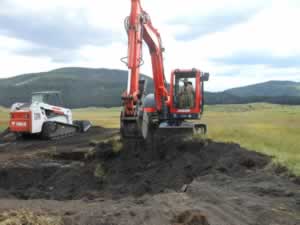 Keystone Restoration Ecology implements our designs and works in partnership with trained restoration contractors. Good communication and oversight ensures that all partners on a project are working together towards the common goal of ecological restoration.
Keystone Restoration Ecology implements our designs and works in partnership with trained restoration contractors. Good communication and oversight ensures that all partners on a project are working together towards the common goal of ecological restoration.
We rent the appropriate machines for your job, ensuring the tool fits the job and is the most efficient and effective tool needed. 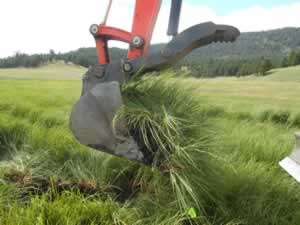
Typical tools we work with are loaders, excavators, dump trucks, bulldozers, and backhoes to implement projects.
